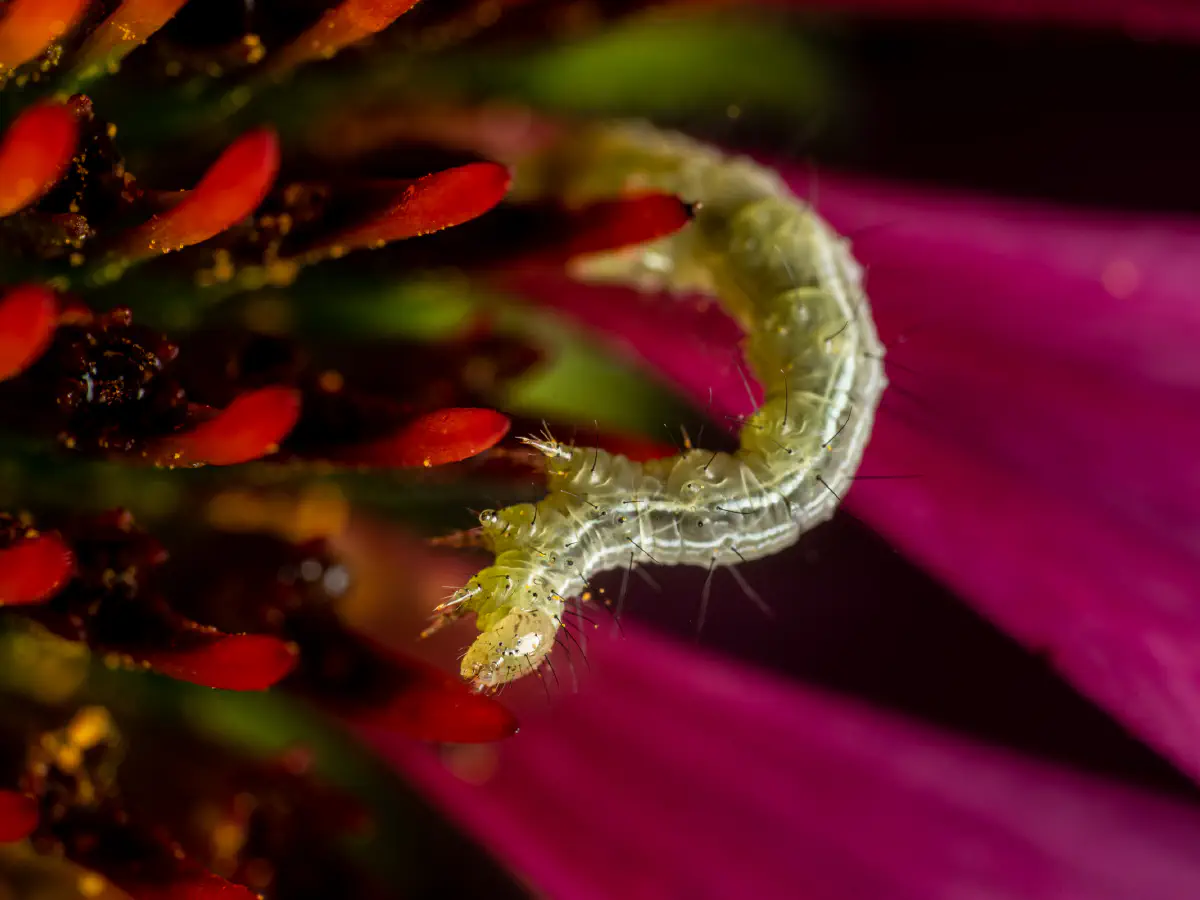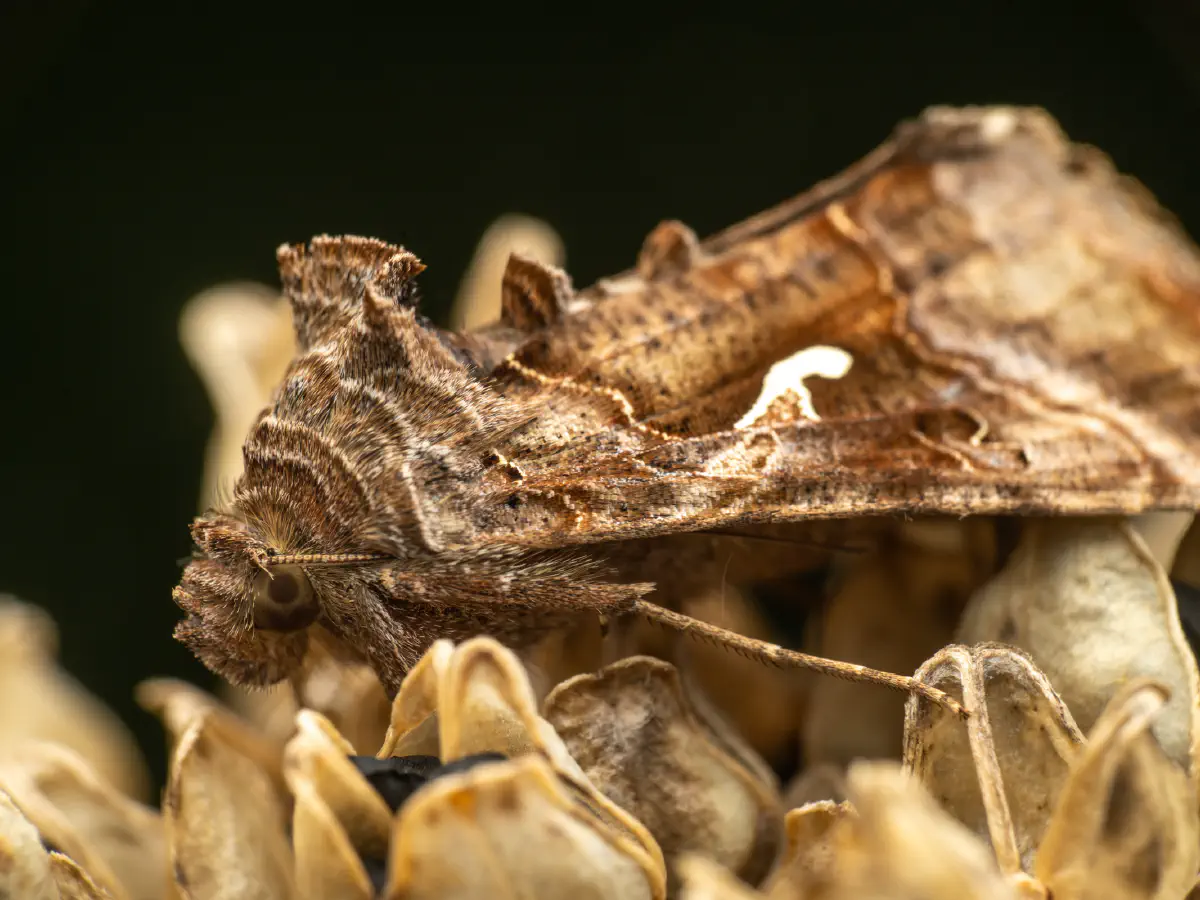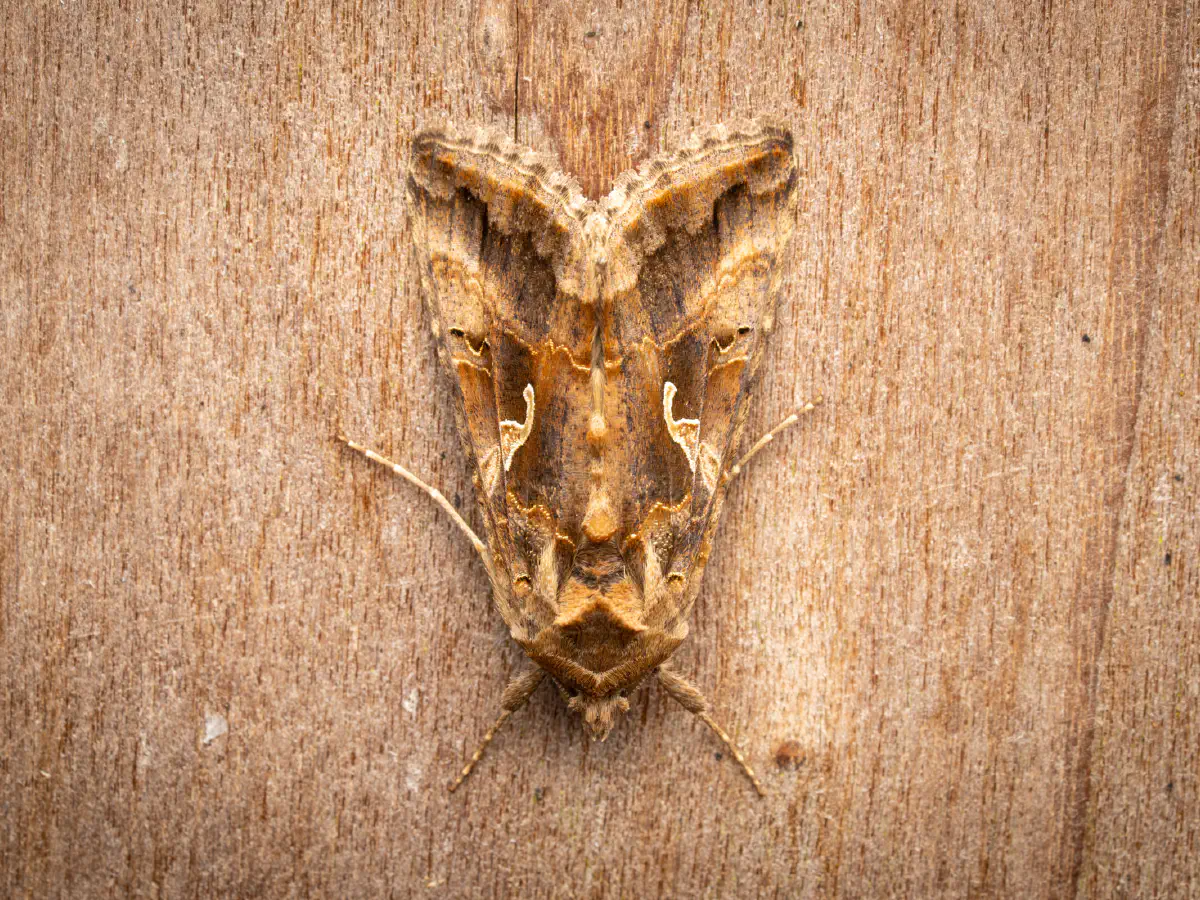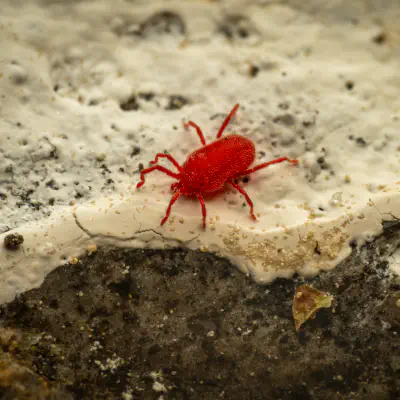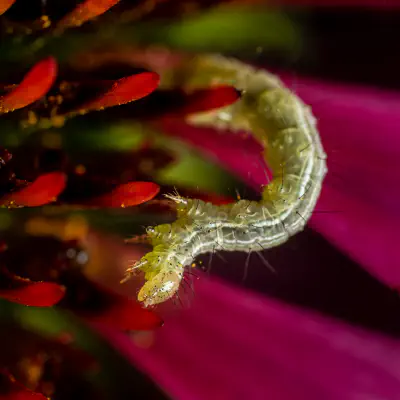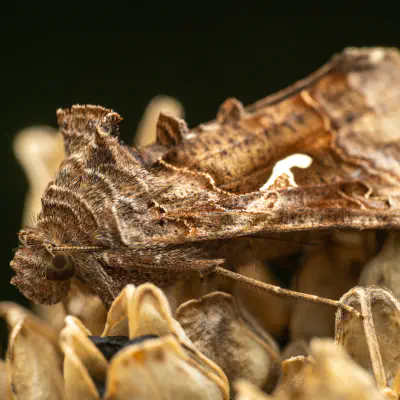P. gamma Forewing purplish grey, with darker suffusion in places; the lines pale silvery edged on both sides with dark fuscous, the outer line indented on vein 2 and submedian fold, as in circumflexa; the oblique orbicular and the reniform conversely oblique and constricted in middle, both edged with silvery: the median area below middle blackish, containing a silvery gamma; the subterminal dentate and indented, preceded by a darker shade; hindwing brownish grey with darker
veins and a broad blackish terminal border: aberrations due to difference in ground colour are ab. pallida Tutt, in which the ground colour is whitish grey, with the markings appearing darker and more sharply defined; ab. rufescens Tutt where it is yellowish red, with the gamma mark pale golden, also the lines and edges of stigmata, and the whole underside reddish: and ab. nigricans Spul., in which the whole forewing up to the pale terminal
space is violet black brown; in the ab. purpurissa ab. nov. (65a) the ground colour is deep olive brown; the inner and outer lines violet, the latter double; subterminal line lustrous violet, irregularly waved and below the middle forming a strong W-shaped mark; the gamma mark is pale golden, and the edges of the dark stigmata are, like the inner line, finely lustrous; a pale violet terminal stripe before termen; hindwing bronzy brownish, with broad
dark terminal border. The example from which this description was made, now in the Tring Museum, was taken in Sussex, on the South Coast of England, and is referred to by Tutt in British Noctuae, Vol. IV, p. 32; lastly, the form gammina Stgr., from Syria and Pontus, is only half as large as typical gamma, with more definitely marked forewings. Larva pale green, with fine whitish or yellowish, partly double, lines; a straight yellowish
lateral line above the white black-ringed spiracles.

